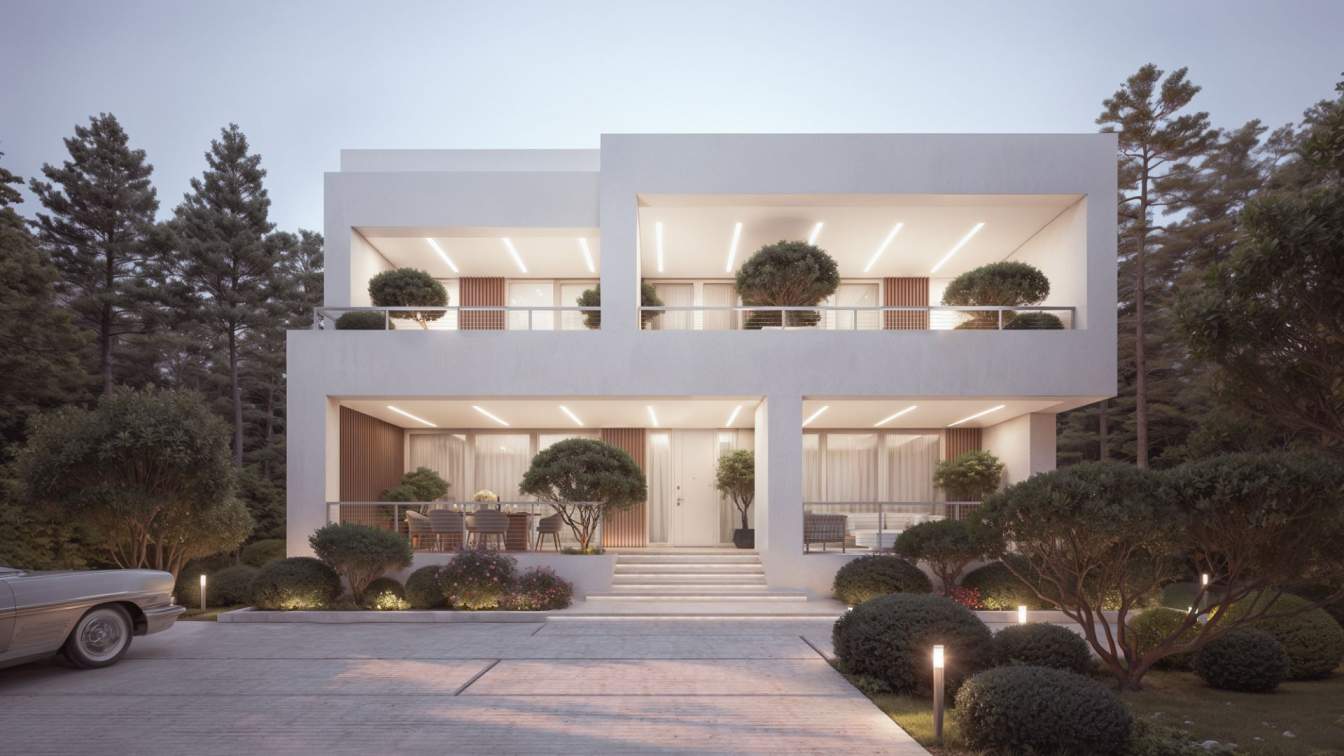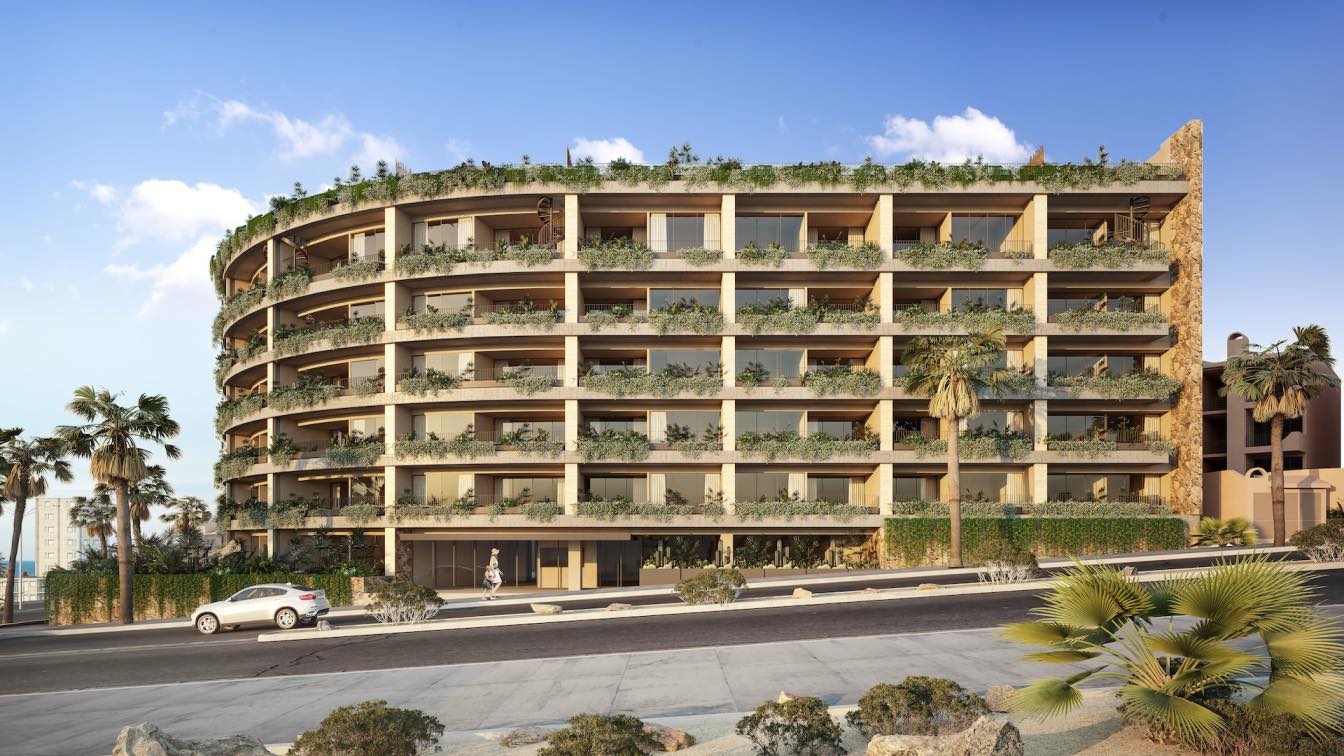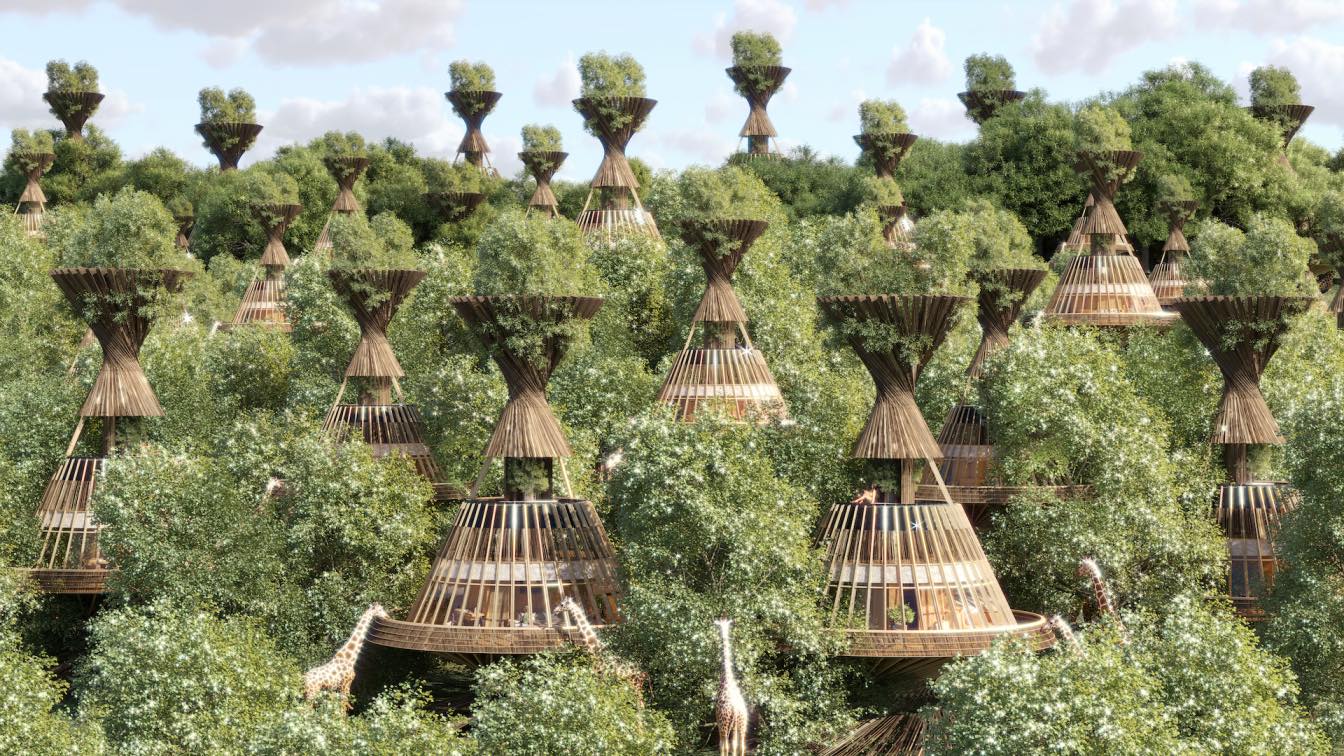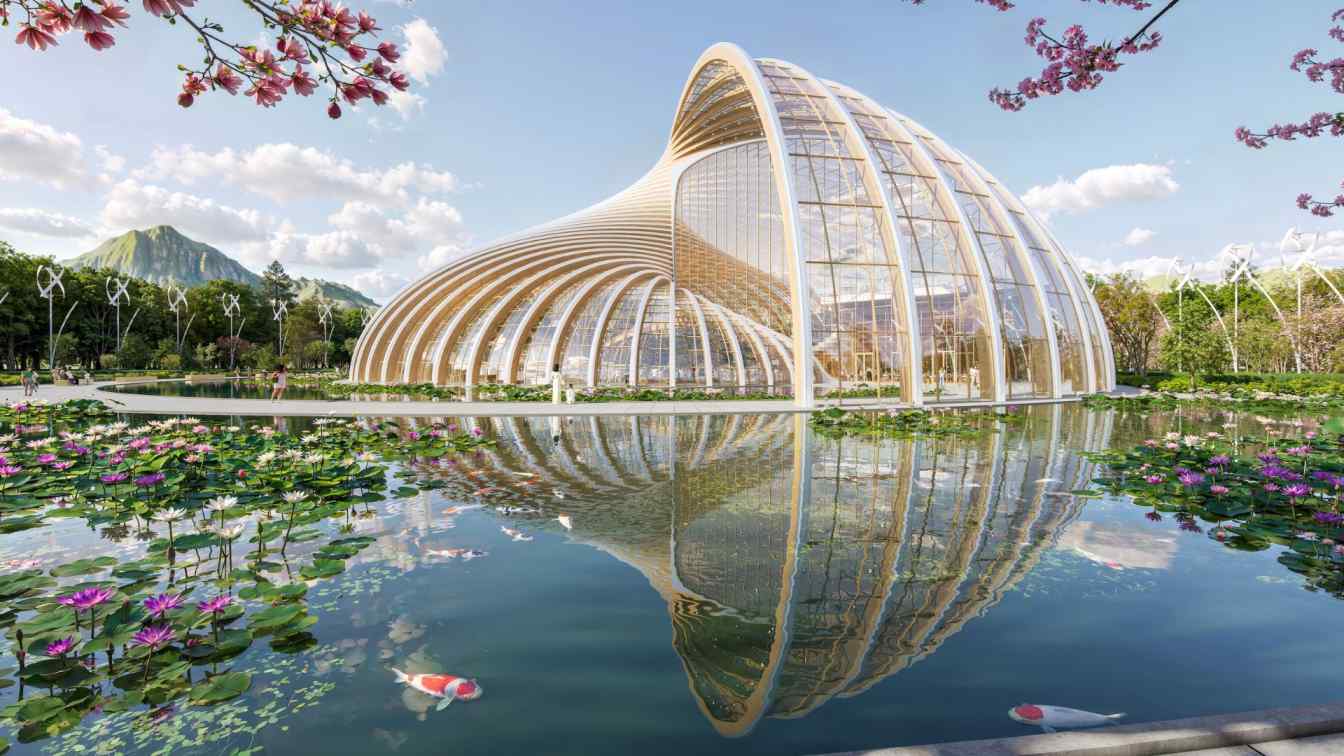Arestea: Engaging in a dialogue with the lexicon of geometric modernism, this residential project articulates a minimalist aesthetic sensibility and the repudiation of ornamental embellishment. The clear, albinic facade of the structure, an embodiment of abstract purity manifested in its delineated linearity, establishes a striking contrast with the organic forms of the meticulously cultivated flora encompassing the garden and verdant porches.
Leading to the courtyard adorned with aromatic blossoms and shrubbery, the verandas and sliding aluminium-framed fenestration facilitate the seamless integration and interpenetration of interior and exterior spatial domains, while concurrently ensuring generous insolation. This symbiotic interplay between the microcosm of the architectural object and the natural scenery of the garden finds expression in both the diurnal and nocturnal realms; the contemporary outdoor illumination system, characterized by a rhythmic repetition, forge a cohesive synthesis of technology and environment, where the demarcations between the artificial and natural realms fade.
This notion of non-antagonistic coexistence of apparent contradictions defines the heterogeneous, multifarious character of the project. It resonates, for instance, with the principle of eschewing rigid boundaries between inner and outer spaces, interior and environment - a tenet emblematic of traditional Japanese architecture, as well as the concept of "grey space" derived from the pivotal role of pauses and intervals in Japanese artistic traditions. Its quintessential feature lies in the conceptualization of time and space as an indivisible, unified reality. An engawa (縁側/掾側) - an open gallery circumscribing the outer perimeter of the dwelling, situated beneath the sheltering roof, unifying the interior and exterior domains, the eminent architect Kisho Kurokawa attributes to such transitional, liminal spaces in architecture.

Predicated upon the north-south axial orientation, the rational spatial configuration unfurls around the central hall, constituting the compositional core of the plan. The interior spatial articulation has been tailored to the functional requisites and desires of the client.
The residence encompasses three primary floor levels. The zero mark corresponds to an elevation of 429.90 meters above mean sea level. The rooms are interconnected via hallways and staircases. At the -2.80 meter level, two storage rooms and a staircase are located. The ±0.00 level accommodates the living room, kitchen-dining area, laundry room, a bedroom, walk-in closet, two bathrooms, a hall, staircase, and two porches. The +3.40 level comprises four bedrooms, four bathrooms, four walk-in closets, a hall, a staircase, one trisected and two detached balconies. The utilities for water supply, sewage, heating, and ventilation are consolidated within vertical shafts.
The plot area measures 669.0 square meters. It is bordered by a road to the south and adjacent parcels on the remaining three sides. An area of 269.9 square meters, constituting 40% of the site, has been dedicated to verdant landscaping, comprising a grassy carpet interspersed with ornamental shrubbery and arboreal plantings. The facade cladding employs high-quality plaster supplemented by wooden decorative panelling. The fenestration comprises white-painted aluminium frames, as do the metallic railings of the balconies and porches. The roof structure is of a flat typology. The primary load-bearing system is a reinforced concrete structural framework.











